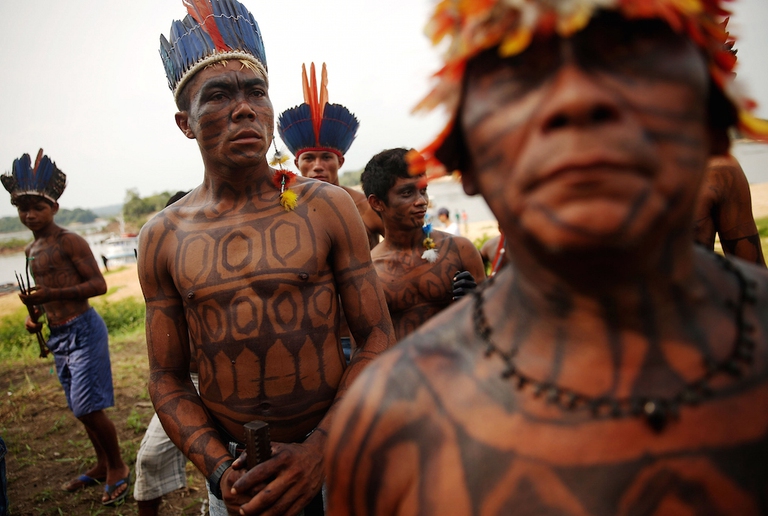
A special report from the Yuqui territory delves deep into the dreams, challenges, joys and sadness of one of Bolivia’s most vulnerable indigenous groups.
Survival International, a global movement for tribal peoples’ rights, has denounced mercury poisoning in Latin America in a letter to the UN Special Rapporteur for Health. The organisation highlights Venezuela, Peru and Brazil as countries that don’t comply with procedures to monitor the effects of mining on the environment. Mercury contamination, which commonly follows illegal
Survival International, a global movement for tribal peoples’ rights, has denounced mercury poisoning in Latin America in a letter to the UN Special Rapporteur for Health. The organisation highlights Venezuela, Peru and Brazil as countries that don’t comply with procedures to monitor the effects of mining on the environment. Mercury contamination, which commonly follows illegal natural resource extraction, can be dangerous to human health, leading to kidney malfunction, acute anaemia and respiratory diseases.
Tribal people are especially vulnerable to mercury poisoning as most mining activities are concentrated in areas they inhabit: the Amazon rainforest in particular. The alarm over mercury poisoning of Nahua People in the Peruvian Amazon has already been raised by Survival. States have obligations towards indigenous people, not only under domestic but also under international law, according to the tribal rights group. Failing to prevent poisoning and assist contaminated ethnic groups is a violation of several international treaties, including the International Bill of Human Rights and ILO Convention 169.
Mercury gets into the digestive system mainly through the consumption of fish. Up to 60 percent of fish sold in a local market in Puerto Maldonado (the Peruvian gold mining capital, located in the region of Madre de Dios) is contaminated with mercury, according to estimates. This exceeds safety levels such as those defined by the United States Environmental Protection Agency. 78% of the city’s adult population shows signs of mercury poisoning.
Illegal gold mining is a growing problem in the #Amazon, @ReutersWorld : https://t.co/1DxsxhtuUepic.twitter.com/e3qu8TxTCM
— Survival (@Survival) April 27, 2016
“It’s relatively easy to get a permit to explore for gold”, Enrique Ortiz, a renowned Peruvian environmental activist, says. The bureaucratic complications start once a good spot for mining is identified. “Then you have to get the actual permits. These require engineering specifications, statements of environmental protection programmes, plans for the protection of indigenous people and environmental remediation”. Miners evade those obstacles by claiming to be in the process of getting permissions. This means that “they have a claim to the land but not much responsibility to it,” according to Ortiz. In fact, over 90% of gold mines in Madre de Dios are illegal.
Siamo anche su WhatsApp. Segui il canale ufficiale LifeGate per restare aggiornata, aggiornato sulle ultime notizie e sulle nostre attività.
![]()
Quest'opera è distribuita con Licenza Creative Commons Attribuzione - Non commerciale - Non opere derivate 4.0 Internazionale.
A special report from the Yuqui territory delves deep into the dreams, challenges, joys and sadness of one of Bolivia’s most vulnerable indigenous groups.
The Yuqui people of the Bolivian Amazon fight not only to survive in the face of settlers, logging and Covid-19, but to preserve their culture and identity.
Jair Bolsonaro is accused of crimes against humanity for persecuting indigenous Brazilians and destroying the Amazon. We speak to William Bourdon and Charly Salkazanov, the lawyers bringing the case before the ICC.
Activists hail the decision not to hold the 2023 World Anthropology Congress at a controversial Indian school for tribal children as originally planned.
Autumn Peltier is a water defender who began her fight for indigenous Canadians’ right to clean drinking water when she was only eight years old.
The pandemic threatens some of the world’s most endangered indigenous peoples, such as the Great Andamanese of the Andaman and Nicobar Islands in India.
The Upopoy National Ainu Museum has finally opened. With it the indigenous people of Hokkaido are gaining recognition but not access to fundamental rights.
A video shows the violent arrest of indigenous Chief Allan Adam, who was beaten by two Royal Canadian Mounted Police (RCMP) officers.







